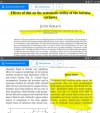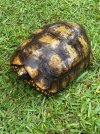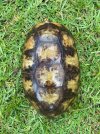o.singer1972
Member
Dear friends As I am about to receive another adult Yellowfoot and create a new setup I was re-examining and re-questioning my 3 decades of teachings about Geochelone denticulata and Geochelone carbonaria habitat and enclosure soil structuring.
I happened to do a book study with my wife. I encountered a verse from the ancient dao te ching: ““Those who know don't talk. Those who talk don't know”. Therefore I rarely leave comments to posts unless its needed and helpful.
I think that to challenge self is an act of humility. Humility is essential for learning and growth in any field of study.
I was questioning the whole bedding thing while I was reading a publication from 2013. It is labelled:” The impacts of shifting cultivation on tropical forest soil: a review” from the University of São Paulo, Brasil (see attached screenshot of article).
It seems that the Amazon rainforest Physical soil properties does incorporate carbon andcarbonated matter in the humus. Also it seems that the forest soil has improved capacity for absorption of the nutrients by the increase in the Cation Exchange Capacity (CEC);recuperation of the fine layer of the soil. In regard to the structure of the physical soil properties: recuperation of the structure of the soil with the progressive increase of the amount of organic matter.
When it comes to chemical soil properties, there is an upkeep of the pH in the soil changed by the ash, favoring the availability of nutrients. Throughout the cultivation period, the pH returns to its original, more acidic condition. This favors the availability of nutrients. The Amazon rainforest soil seems to be ‘ALIVE’ unlike the ‘DEAD MATTER’ of bagged substrates I used to get.
I was mixing the finest of bagged stuff. Organic untreated Cypress mulch & Peat Moss and sphagnum moss. But still it pales in comparison to the real deal forest bedding.
In regard to the dynamics of macro- and micronutrients of the forest soil there is a coverage of soil by vegetation decreasing the loss of nutrients; progressive increase of organic matter with an increase in the availability of the nutrients. Also the soils’ Cation Exchange Capacity (CEC) is different from what we all buy in bags. It seems that increase in the CEC, increase in electric conductivity; greater availability of bases; an increase in soil fertility. Means the substrate is actually ‘ALIVE’ and fertile. Our Redfoots and Yellowfoots and other creatures are actually benefiting from it. In regard to the Dynamic of macronutrients of the Amazon soil, I actually read that the Amazon forest soil is covered by vegetation which decreases the loss of nutrients; progressive increase of the organic matter with an increase in the availability of the nutrients. Our bagged matter does not hold the same value.
What is the organic status of the Amazon soil in comparison to the bagged items we buy, The soil through longer time allows for the formation of humus, improving the physical, chemical, and biological properties of the soil. Soil Organic Carbon (SOC) is another factor. The stock of SOC is positively altered with the decrease in the growth rate of the biomass above the soil, as in the late
successional stages.
The biological properties of the rainforest soil, Microfauna, is that ecological succession increases the amount of organic matter in the soil, increasing the rate of microfauna activities, increasing its biomass and diversity. In regard the Macrofauna, the ecological succession increases the amount of soil organic matter, increasing the rate of macrofauna activity, increasing its biomass and diversity. The soil seed bank, possibility of germination of the seed bank and the entrance of seedlings, favoring the evolution of the ecological succession. With this, the reestablishment of the initial soil conditions is favored.
I decided to mix more ‘ALIVE MATTER’ with sweet peet. Natural no additive. Along Organic Cypress mulch. The attempt is to make a richer forest-like soil.
Just thinking loud,
What worked for you well? Why?
What did you had to change in the surrounding to accommodate your tortoises better?
I happened to do a book study with my wife. I encountered a verse from the ancient dao te ching: ““Those who know don't talk. Those who talk don't know”. Therefore I rarely leave comments to posts unless its needed and helpful.
I think that to challenge self is an act of humility. Humility is essential for learning and growth in any field of study.
I was questioning the whole bedding thing while I was reading a publication from 2013. It is labelled:” The impacts of shifting cultivation on tropical forest soil: a review” from the University of São Paulo, Brasil (see attached screenshot of article).
It seems that the Amazon rainforest Physical soil properties does incorporate carbon andcarbonated matter in the humus. Also it seems that the forest soil has improved capacity for absorption of the nutrients by the increase in the Cation Exchange Capacity (CEC);recuperation of the fine layer of the soil. In regard to the structure of the physical soil properties: recuperation of the structure of the soil with the progressive increase of the amount of organic matter.
When it comes to chemical soil properties, there is an upkeep of the pH in the soil changed by the ash, favoring the availability of nutrients. Throughout the cultivation period, the pH returns to its original, more acidic condition. This favors the availability of nutrients. The Amazon rainforest soil seems to be ‘ALIVE’ unlike the ‘DEAD MATTER’ of bagged substrates I used to get.
I was mixing the finest of bagged stuff. Organic untreated Cypress mulch & Peat Moss and sphagnum moss. But still it pales in comparison to the real deal forest bedding.
In regard to the dynamics of macro- and micronutrients of the forest soil there is a coverage of soil by vegetation decreasing the loss of nutrients; progressive increase of organic matter with an increase in the availability of the nutrients. Also the soils’ Cation Exchange Capacity (CEC) is different from what we all buy in bags. It seems that increase in the CEC, increase in electric conductivity; greater availability of bases; an increase in soil fertility. Means the substrate is actually ‘ALIVE’ and fertile. Our Redfoots and Yellowfoots and other creatures are actually benefiting from it. In regard to the Dynamic of macronutrients of the Amazon soil, I actually read that the Amazon forest soil is covered by vegetation which decreases the loss of nutrients; progressive increase of the organic matter with an increase in the availability of the nutrients. Our bagged matter does not hold the same value.
What is the organic status of the Amazon soil in comparison to the bagged items we buy, The soil through longer time allows for the formation of humus, improving the physical, chemical, and biological properties of the soil. Soil Organic Carbon (SOC) is another factor. The stock of SOC is positively altered with the decrease in the growth rate of the biomass above the soil, as in the late
successional stages.
The biological properties of the rainforest soil, Microfauna, is that ecological succession increases the amount of organic matter in the soil, increasing the rate of microfauna activities, increasing its biomass and diversity. In regard the Macrofauna, the ecological succession increases the amount of soil organic matter, increasing the rate of macrofauna activity, increasing its biomass and diversity. The soil seed bank, possibility of germination of the seed bank and the entrance of seedlings, favoring the evolution of the ecological succession. With this, the reestablishment of the initial soil conditions is favored.
I decided to mix more ‘ALIVE MATTER’ with sweet peet. Natural no additive. Along Organic Cypress mulch. The attempt is to make a richer forest-like soil.
Just thinking loud,
What worked for you well? Why?
What did you had to change in the surrounding to accommodate your tortoises better?
Attachments
-
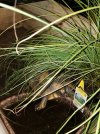 198345641_2969033353333569_4425305527677773759_n.jpg476 KB · Views: 12
198345641_2969033353333569_4425305527677773759_n.jpg476 KB · Views: 12 -
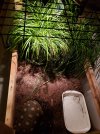 198955890_2969033936666844_1992803582568611611_n.jpg546.8 KB · Views: 12
198955890_2969033936666844_1992803582568611611_n.jpg546.8 KB · Views: 12 -
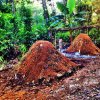 202081303_2974892652747639_4540496727312826619_n.jpg156.5 KB · Views: 13
202081303_2974892652747639_4540496727312826619_n.jpg156.5 KB · Views: 13 -
 The impacts of shifting cultivation on tropical forest soil.JPG39.9 KB · Views: 13
The impacts of shifting cultivation on tropical forest soil.JPG39.9 KB · Views: 13






